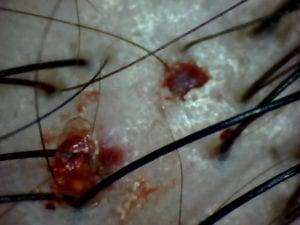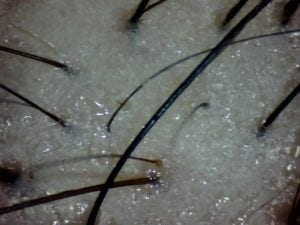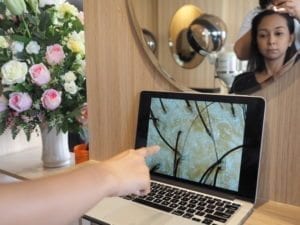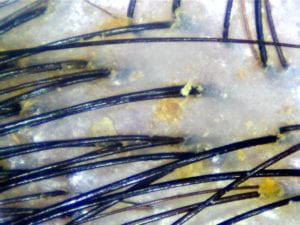Our scalp is one of the most neglected and abused parts of our body. We often take care of our bodies through exercising and eating healthy. When our muscles are tired and aching, we treat it to massage or stretch it out. However, we do not take special care of our scalps and we even punish it by exposing it to harmful chemicals and substances when we dye our hair, bun our hair tightly or use shampoos not suitable for our scalps. We intentionally damage our hair by using hot irons to straighten our hairs or running our hairs through overly hot blow dryers.
We take for granted that our scalp will keep producing strong, beautiful hairs forever, but it usually isn’t the case. Our scalp will only produce healthy hairs if it is healthy and has the right amount of nutrients. If it is not healthy, it will not produce healthy hairs, just like barren land.
It is only until we start losing hair by the bunch, leaving our scalp exposed, do we realise how important the health of our scalp is! If we understand that prevention is better than cure, then why do most of us not practice this with our scalp? I, myself, had been guilty of this. These are real images of my hair and scalp before I started scalp management and herbal treatment with Bee Choo Origin.

Me, before scalp management

Due to my oily and itchy scalp, I’m guilty of scratching my scalp too hard!

My scalp was not healthy, it was oily and my hairs were thinner than the normal healthy hair
I had always had itchy, oily scalp. I thought it was normal, as I am in hot and fervid Singapore and I often go under the sun while playing football. I thought the itchiness and oiliness were due to my perspiration and the hot and humid weather.
The bottom line is, my scalp was not healthy. So how do we actually check if our scalp is healthy? How should a healthy scalp feel or look like?
The best way to check how healthy your scalp is, is to do a scalp scan. The scalp scan will immediate show how healthy or unhealthy your scalp is; be it too oily, too dry, sensitive, losing hair or even infected with bacterial or fungus!

Example of hair scan
Even if you have never seen a photo of a scalp scan; showing you some photos below, you will still probably be able to tell between a healthy scalp versus an unhealthy scalp. Let’s play a simple game, which picture 1, 2, 3 or 4 shows an example of a scalp in good healthy condition?
 Picture 1
Picture 1

Picture 2

Picture 3

Picture 4
You probably guessed that Picture 4 is that of a healthy scalp even if this is the first time seeing images of hair scan, and you are correct!

Alopecia Areata, a condition whereby the body immune system attacks your own hair follicles.
4. If you scalp scan is like picture 4, then you might look something like my hair after doing the herbal hair treatment with Bee Choo Origin.
Fully recovered now, thanks to Bee Choo’s herbal hair treatment
P.S If you’re interested in the topic, you can check out more of such images by sgbeautyundercover!
So why did Bee Choo Herbal Hair Treatment work?

Example of the herbal treatment being done
Bee Choo Origin Herbal Treatment contains a traditional Chinese herb known as Ling Zhi which is an adaptogen with a dual-modulating function. Ling Zhi helps to modulate your scalp regardless if it is too oily or too dry, bringing your scalp back to its normal and healthy state after each treatment. So after each treatment, my scalp felt much cleaner. The oiliness only came back 1-2 weeks after my first treatment. I also realise that which each treatment, my scalp felt much more comfortable and cleaner and which each treatment, the oiliness took a longer duration to come back.
Today, my scalp is nice and healthy, I still go for my treatment 1-2 times per month, and even if I am very busy and caught up with work, the oiliness would not return as long as I was using the Ginger Lime Shampoo or Purity Scalp Shampoo that Bee Choo Origin sells.
Bee Choo Origin’s herbal paste contains many more Chinese herbs that helps with other hair issues such as dandruff, sensitive scalp, bacterial infection and hair loss. Funnily, my mother had been a frequent customer of Bee Choo Origin as she had been going there to cover her white hairs (the herbal paste contains a reddish/copper dye) and at the same time get her scalp clean and treated.
Only after visiting Bee Choo Origin, did I realise how great it feels to have healthy and clean scalp. I wished I had new about Bee Choo Origin earlier in my life! I wonder why didn’t my mother tell me.
Don’t wait further, Bee Choo Herbal Treatment, is the only affordable and effective scalp and hair management service you’ll need in your life. Start taking care of your scalp early, and you will enjoy beautiful strong healthy hair into your silver years. Plus you feel great and confident! You can check out our review on facebook too!
Convinced by the product and services, I eventually opened Bee Choo Ladies and took the master dealership for Bee Choo Thailand.
Author –
Crispin William Francis.